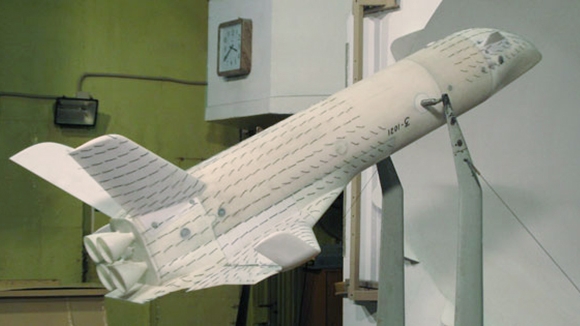Roscosmos expects to create a launch vehicle with a returnable first stage

The draft federal space program for 2016–2025, sent out by the Roscosmos corporation for approval by the ministries, provides for the creation of a “space rocket complex with a reusable light-class carrier rocket at the Vostochny cosmodrome.” “Roskosmos” wants to create a rocket with a winged first stage, which, after working off, does not burn, but returns to the launch area for reuse.
One of the ways to reduce the cost of putting cargo into space orbit is the use of reusable equipment. For example, in a carrier rocket, the most expensive part is its first stage, which, for example, contains such costly units as cruise engines. Naturally, the engineers repeatedly returned to the topic of the first stage to be returned. Today, such experiments are carried out both by the state space programs and by private firms.
')
1. The company of American billionaire Ilona Mask SpaceX is trying to land the first stage of the Falcon 9 rocket due to the work of rocket engines. The rocket is already in operation, but both attempts to rescue the first stage were unsuccessful .
2. Another American company, United Launch Alliance - a joint venture of Lockheed Martin Space Systems and Boeing Defense, Space & Security, is working on the Vulcan rocket concept. Her first stage is planned to return to the ground with a parachute.
3. The European AirBus Group is working on the Adeline first-stage return project. For 5 years, the project has not gone beyond the concept stage, but about € 15 million has already been invested in it.
4. In the State Rocket Center. Makeeva developed " Rossiyanka " - a two-stage heavy launch vehicle. It is planned that the first stage of the rocket can be used up to 25 times. The return stage is carried out on a ballistic trajectory by re-inclusion of regular engines. In 2011, the center presented its development at the Roskosmos competition for the development of the Reusable Rocket and Space System of the first stage (MRKS-1).
5. But according to the results of the competition the order was received by the GKNPTs them. Khrunichev with the project " Baikal-Angara ". After all, the GKNPTK, together with NPO Molniya, have been working since 2001 on a reusable first-stage accelerator for the Angara launch vehicle. The first concept was shown at the MAKS-2001 aerospace show. Having won the competition, GKNPTs received 250 million rubles to continue the development of the project.
In 2013, at the Central Aerohydrodynamic Institute named after Zhukovsky (TsAGI), by order of Khrunichev, the landing characteristics of the returning winged unit MRKS, made in the form of a model, were studied. The model of the rocket strongly resembles the Space Shuttle and Buran space shuttles.

Rocket mockup
Being satisfied with the obtained results, Roscosmos found a place in this new development program for this project, which is still under the cipher LEC-VRB. In 2019, it is planned to begin the development of TZ, and from 2021 - to provide funding in the amount of 12.5 billion rubles, and this money will be spent only on the development of the rocket. It is expected that the infrastructure for its launch and landing will be built at the expense of funds allocated for the development of space centers.
“It is impossible to call OCR“ LEK-VRB ”the direct heir of the MRKS, but this is essentially the heir,” explained the Khrunichev press service. - The last 10 years, namely GKNPTs them. Mv Khrunicheva was engaged in a reusable theme in the space industry.
“The rescued first step is a double-edged sword,” says Andrei Ionin, corresponding member of the Tsiolkovsky Russian Academy of Cosmonautics. - No one has yet saved liquid rocket engines and has not tried to reuse them. You need to carefully look at how much the cost of building and operating a reusable stage will be economically viable. After all, if you save 20%, but at the same time the rocket will explode five times more often, then no one needs such savings.
According to Ionin, the alternative way to reduce the cost of start-ups could be to reduce the cost of engines, the cost of which reaches 50% of the total cost of the carrier.
Source: https://habr.com/ru/post/366179/
All Articles